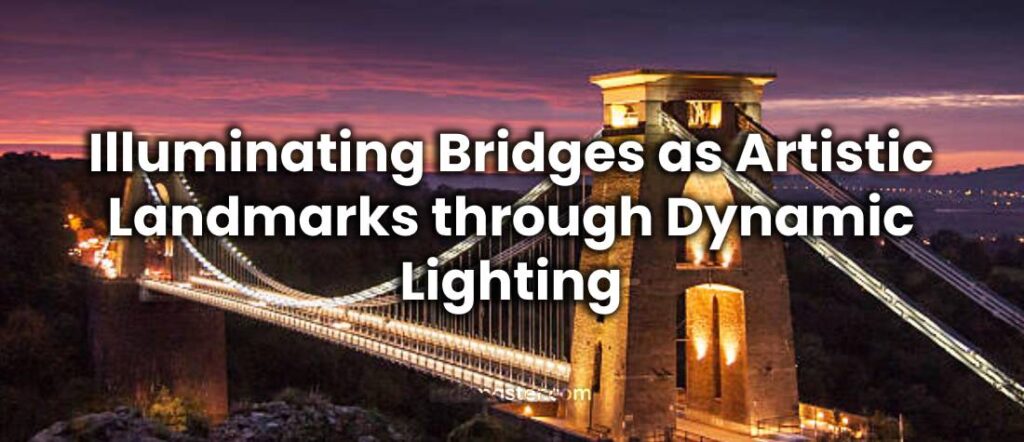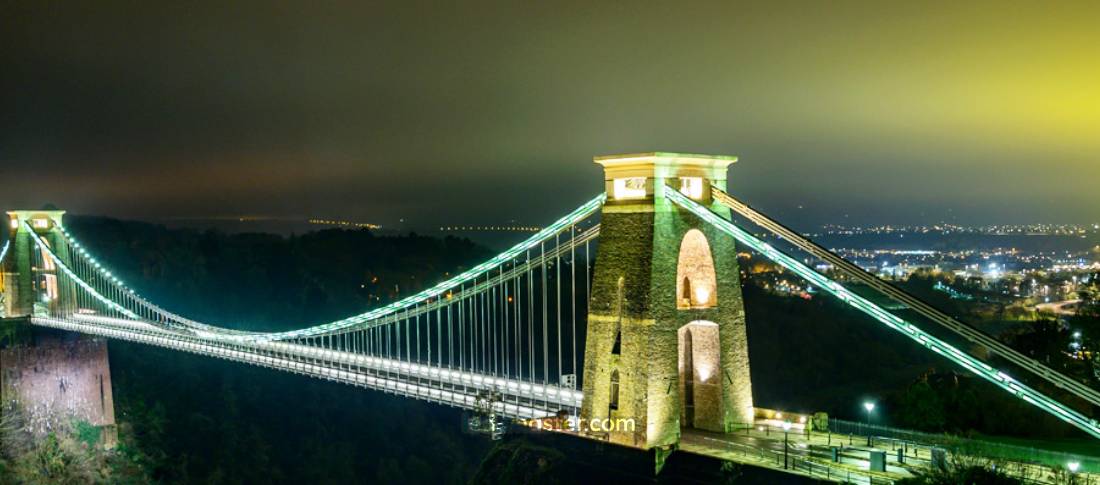In recent years, the integration of dynamic lighting into bridge design has elevated these structures to artistic landmarks that captivate and inspire. By blending functionality with artistry, bridges illuminated with dynamic lighting systems redefine urban spaces, enhance their surroundings, and create memorable experiences for those who encounter them.
Table of Contents
ToggleThe Evolution of Bridge Lighting
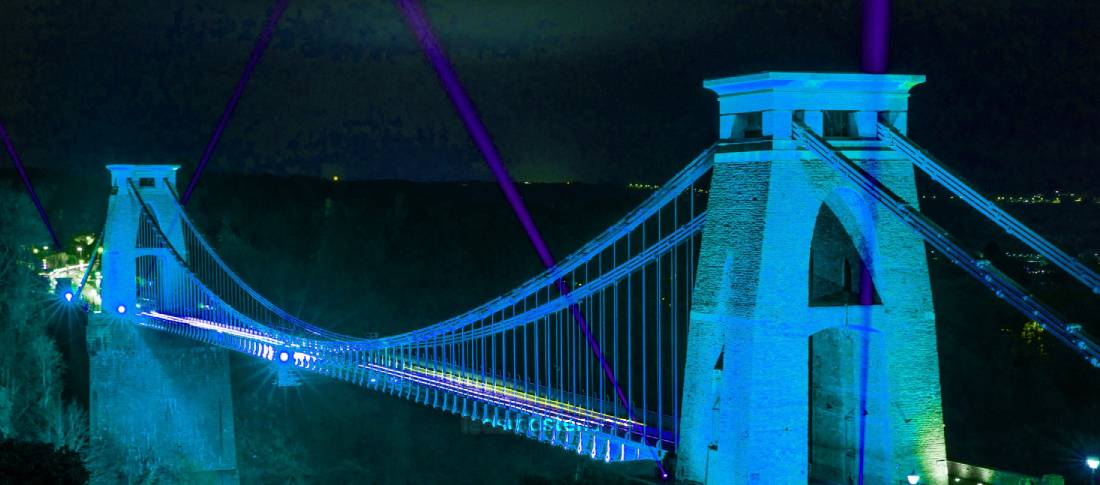
From Functionality to Artistry
Originally, bridge lighting was designed primarily for visibility and safety, catering to the practical needs of vehicles and pedestrians. Gradually, designers and urban planners began to realize the transformative power of lighting as a creative tool. The shift from static illumination to dynamic lighting has turned bridges into radiant, interactive elements within cityscapes, making them both functional and visually captivating.
Advancements in Lighting Technology
The evolution of dynamic lighting owes much to advancements in LED technology. LEDs, with their energy efficiency, versatility, and durability, enable designers to experiment with a wide range of effects, including smooth transitions between colors, synchronized patterns, and animated sequences. These capabilities have expanded the creative potential of bridge lighting, allowing it to move beyond traditional white light and embrace vibrant, dynamic displays.
The Art of Color-Changing Light Design
Crafting Emotional Experiences
Color-changing light designs transcend mere decoration to engage viewers on a deeply emotional level. The strategic use of colors can evoke a spectrum of feelings, transforming the atmosphere of a bridge and its surroundings. Warm hues such as reds, oranges, and yellows ignite a sense of energy, passion, and excitement, making them ideal for celebratory occasions or to highlight the vibrant spirit of an urban space. On the other hand, cooler tones like blues, greens, and purples introduce a sense of calm, serenity, and connection to nature, making them well-suited for tranquil settings or to create a reflective mood.
By leveraging programmable lighting systems, designers can seamlessly transition between colors or blend hues to create visually stunning effects. These systems allow bridges to adapt their ambiance to reflect specific themes, such as seasonal changes, cultural festivals, or special commemorations. For example, a bridge might glow with soft pastels during spring, shift to bold, fiery tones for summer festivities, or adopt icy blues and whites during winter months. Such dynamic adaptability ensures that the lighting remains fresh, engaging, and relevant, enriching the experience for all who encounter it.
Highlighting Structural Beauty
Dynamic lighting is an invaluable tool for emphasizing the architectural features of a bridge, allowing its structural elegance to shine even in darkness. Color-changing lights can be meticulously positioned to accentuate key elements of the design, such as the sweeping curves of an arch, the verticality of suspension cables, or the intricate details of supporting trusses. By illuminating these components, the bridge becomes a canvas for light, where its unique engineering and artistry are celebrated.
Designers often employ color palettes that harmonize with the surrounding environment. In urban settings, lighting may reflect the hues of nearby buildings or city landmarks, ensuring the bridge integrates seamlessly into the cityscape while still drawing attention as a standout feature. In natural settings, lighting schemes may echo the tones of the sky, water, or landscape, creating a sense of unity between the bridge and its surroundings. Such thoughtful integration ensures the bridge remains visually harmonious while maintaining its identity as a landmark.
Telling Stories Through Light
Dynamic lighting has the power to narrate stories, using colors, sequences, and patterns to communicate ideas and emotions. Bridges illuminated with changing lights often become storytellers, conveying messages that resonate with their communities. For instance, transitions between red, white, and blue may honor national holidays, while a flowing gradient of blues and greens might mimic the movement of water beneath the bridge.
Lighting can also mark significant events or celebrate cultural milestones. During awareness campaigns, bridges might adopt colors associated with specific causes, such as pink for breast cancer awareness or rainbow hues for pride celebrations. These displays connect bridges to the narratives of their communities, making them more than just physical structures. They become dynamic canvases that engage, inspire, and unite people through shared experiences.
Transforming Urban Spaces
Enriching the Nighttime Landscape
The nighttime landscape of a city takes on a new dimension when bridges are illuminated with dynamic lighting. When a bridge becomes a glowing sculpture, its vibrant colors reflect on nearby waterways, creating an enchanting interplay of light and movement. These illuminated structures capture attention, drawing both residents and visitors to admire their beauty and explore the surrounding area.
The presence of dynamically lit bridges can also redefine how cities are experienced after dark. Spaces that might otherwise feel dormant at night become alive with color and activity. Urban planners often use such lighting to enhance the visibility and vibrancy of waterfronts, pedestrian paths, or underutilized spaces, encouraging nighttime engagement and fostering a sense of safety and vitality.
Enhancing Local Identity
Color-changing lights can transform bridges into symbols of local pride by reflecting the culture, history, and values of the communities they serve. Designers may incorporate regionally inspired themes, patterns, or palettes into lighting schemes, connecting the bridge to its location in meaningful ways. For example, a bridge in a coastal town might feature lighting that evokes the hues of the sea and sky, while one in a historic city might use colors inspired by local architecture or traditions.
These thoughtful designs allow bridges to become cultural landmarks, celebrated not only for their functionality but also for their role in representing the community. By fostering a sense of identity and pride, illuminated bridges help reinforce the connection between people and their environment.
Boosting Tourism and Economy
Illuminated bridges often become attractions in their own right, drawing visitors eager to experience their dynamic displays. Whether a bridge glows with subtle elegance or dazzles with vibrant animations, it captures the imagination and provides a reason for exploration, especially during nighttime hours.
Tourism and local businesses benefit from the increased foot traffic around these illuminated landmarks. Restaurants, shops, and other establishments near the bridge often see heightened activity, particularly when the lighting changes to mark events or seasons. Additionally, bridges that frequently update their lighting designs encourage repeat visits, as people return to experience new displays and share them on social media, further amplifying their appeal.
Sustainable Practices in Lighting Design
Energy Efficiency in Dynamic Lighting
Sustainability remains a guiding principle in modern lighting design. LEDs, the backbone of dynamic lighting systems, consume significantly less energy than traditional lighting solutions while offering unparalleled versatility. Their long lifespan reduces the need for frequent replacements, lowering maintenance costs and environmental impact.
Designers often use programmable systems to enhance efficiency further. By dimming lights during periods of low activity or turning them off in the early morning hours, energy consumption can be optimized without compromising the beauty of the display. Such systems demonstrate how stunning visual effects can coexist with environmentally conscious practices.
Renewable Energy Integration
Bridges illuminated with dynamic lighting can incorporate renewable energy sources, such as solar panels or small-scale wind turbines, to power their systems. These solutions not only reduce reliance on conventional energy grids but also highlight a commitment to sustainability. For bridges located in areas with ample sunlight or wind, integrating renewable energy can be a natural and effective choice.
Renewable energy-powered lighting systems serve as examples of how technology and design can come together to create structures that are both visually appealing and environmentally friendly.
Precision in Light Placement
Dynamic lighting systems are designed with precision to ensure their effects are focused and purposeful. Properly directed lighting minimizes light pollution, which can disrupt local ecosystems and obscure the natural beauty of the night sky. Optics and control systems allow designers to target specific areas of the bridge, ensuring that light enhances the structure without spilling unnecessarily into the surrounding environment.
This precision ensures that dynamic lighting designs maintain their impact while respecting the natural and urban contexts they inhabit. A well-placed lighting system becomes an artistic tool, drawing attention to the bridge while preserving the integrity of its surroundings.
Iconic Examples of Color-Changing Bridges
The Gateshead Millennium Bridge
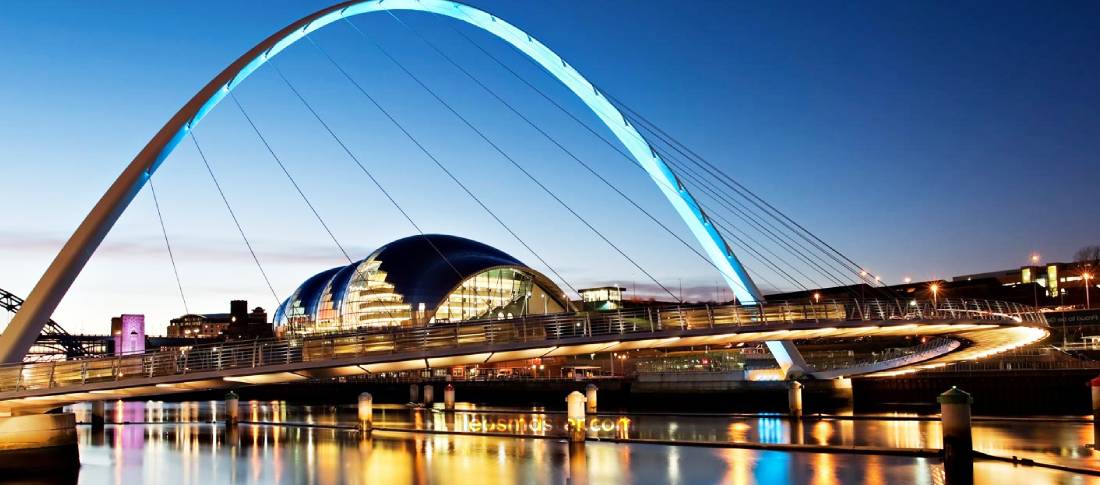
The Gateshead Millennium Bridge, located in the United Kingdom, is one of the most striking examples of a bridge enhanced by a dynamic color-changing lighting system. Its elegant design features a distinctive tilt, allowing the bridge to rotate and create a unique visual impact. The bridge’s lighting design emphasizes its sweeping, gentle arch, with lights that transition smoothly through a spectrum of hues, creating an ever-changing display that captivates all who see it.
As the colors of the lighting shift, they reflect off the River Tyne below, amplifying the mesmerizing effect and giving the water a shimmering, vibrant quality. This not only draws attention to the bridge but also highlights its architectural simplicity, showcasing the beauty of its clean lines and graceful form. The lighting system allows the bridge to blend seamlessly into the surrounding environment, while also standing out as a radiant focal point in the cityscape. Whether viewed from a distance or up close, the dynamic lighting transforms the bridge into a living piece of art, offering a visual experience that changes with the time of day or season.
The Bosphorus Bridge in Istanbul
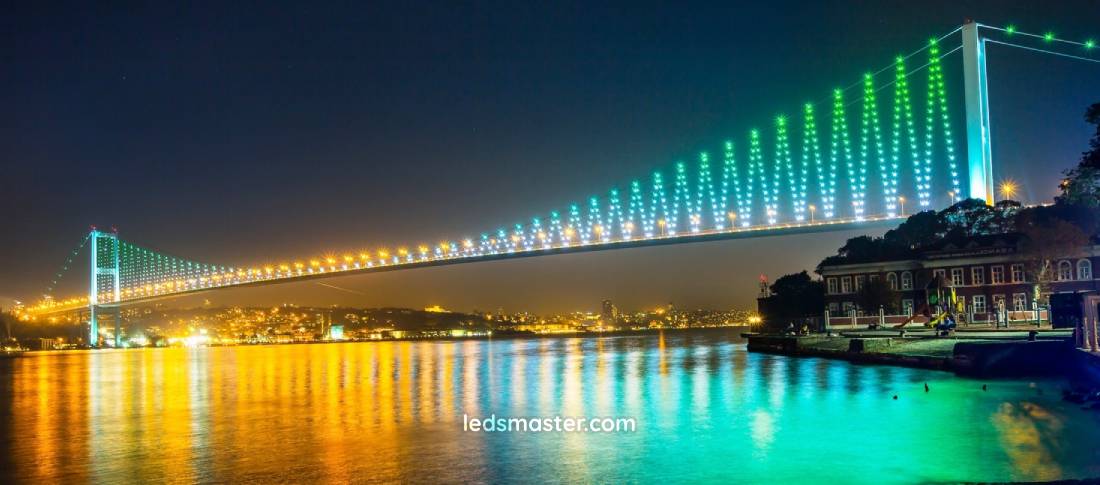
One of the most famous landmarks in Istanbul, the Bosphorus Bridge, is an engineering marvel that spans the Bosphorus Strait, linking the continents of Europe and Asia. The bridge’s dynamic lighting system is not just a decorative feature but a powerful visual statement that celebrates its geographical significance. The color-changing lights on the bridge shift in patterns that reflect the rhythm and vibrancy of this historic city, adding to the grandeur of the structure while celebrating its role as a connector of two distinct continents.
The illumination of the Bosphorus Bridge is often synchronized with national holidays, cultural events, and international celebrations, turning it into a symbolic beacon. The colors shift to reflect the spirit of the occasion—vibrant hues like red and white for national holidays, or blue and green for global environmental initiatives. The bridge’s color transitions emphasize its monumental stature, enhancing its status as a key symbol of Istanbul’s rich cultural and geographic identity. The lighting transforms the bridge into a dynamic, ever-changing spectacle that captivates locals and tourists alike, offering a powerful visual expression of the bridge’s symbolic role in bridging diverse worlds.
The San Francisco Bay Bridge

The San Francisco Bay Bridge, often overshadowed by the Golden Gate Bridge, has gained recognition for its stunning lighting installation known as “The Bay Lights.” This iconic design features thousands of LEDs that create intricate patterns and animations across the span of the bridge. While the majority of the installation glows in a soft white light, the design occasionally incorporates color-changing effects to celebrate specific occasions, holidays, or special events. These bursts of color add an additional layer of vibrancy to the Bay Area’s skyline, drawing attention to the bridge as a dynamic, living feature of the city.
The Bay Lights installation was conceived as an art project, with a focus on creating a visually captivating experience that interacts with both the bridge and its surrounding environment. The LEDs create an animated display, turning the bridge into a canvas of light that evolves over time, offering a constantly shifting visual narrative. On special occasions, the bridge lights up with a variety of colors, transitioning through different hues to reflect the mood of the city or mark significant moments. This colorful display adds an artistic dimension to the structure, making the Bay Bridge a standout feature in the San Francisco skyline. The color-changing lights also contribute to the bridge’s transformation into a symbol of both technological innovation and artistic expression.
Conclusion
Bridges illuminated with color-changing lights represent the perfect fusion of functionality and artistry, transforming these essential structures into captivating landmarks. Through dynamic lighting, bridges not only enhance their architectural beauty but also engage with their communities in meaningful and imaginative ways. By crafting emotional experiences, highlighting structural elegance, and telling visual stories, these illuminated structures redefine how urban spaces are experienced, both day and night. Their ability to enrich the nighttime landscape, celebrate local identity, and attract tourism underscores their role in shaping cultural and economic vitality.
With advancements in sustainable practices and innovative lighting technologies, bridges continue to push the boundaries of design and creativity, becoming symbols of connection, unity, and progress. As they light up skylines and reflect on waterways, these radiant icons leave a lasting impression, reminding us of the power of light to inspire, transform, and connect us all.

